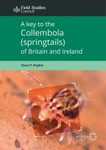About this book
The present investigation encompasses the diversity of collembola qualitatively from the states of east and north-east India and the results of ecological study involving the seasonal abundance and species diversity in two different ecological habitats of West Bengal.
A total 76 species of Collembola belonging to 38 genera and 6 subfamilies obtained from the soil and leaf-litter of the above mentioned states of India. Amongst them, 28 species were endemic to the said regions i.e. 36.84% total species recorded of these states and 14.28% of total Indian fauna of collembolan. Richest diversity of Collembolan fauna was found in the state of Sikkim which includes 39 species under 26 genera, where as minimum diversity was observed in the state of Meghalaya with 11 species under 5 genera. The genus, Salina has been recorded as dominant with individual contribution of 10% or more to the total springtail fauna. The other dominant genera are Callyntrura by 9 species, Lepidocyrtus, 8 species, Dicranocentroides, 5 species and Tomocerus by 3 species. The other genera were either having 2 species or monotypic species. The genera, Ceratophysella, Xenylla, Cyphoderus, Isotomurus, Lepidocyrtus, Salina, Dicranocentroides and Callyntrura were found to occur in maximum number in the study sites.
Diversity indices of Tripura and Meghalaya was more or less similar being 2.051 and 2.060 which in other seven states were 2.791, 2.764, 2.615, 2.557, 2.558, 2.540, and 2.381 respectively i.e., there is little variation between these sites which is substantiated by the occurrence of more or less same number of species. The diversity index was maximum in Manipur showing 2.942. Hill's first diversity number; the number of abundant species (Nl) was maximum in Manipur (18.95) and the number of abundant species minimum was in Tripura (7.7).
Soil factors like temperature, moisture, pH, organic carbon, nitrate and phosphate and its roles in the distribution of collembolan were noticed to have seasonal variation in two adjacent sites of Kolkata.
A total 540 soil samples have been used for samplings in various plots including two different sites, three polluted and three unpolluted soils of forest floor at monthly intervals over a period of 30 months (January, 2000 to June, 2002). Population density was found to be maximum in waste disposal site than that of the forest floor site.
The fauna of the experimental sites belong to 29 species of 21 genera under the families: Hypogastruridae, Onychiuridae, Isotomidae and Entomobryidae. Maximum diversity with 24 species in 17 genera comes in view from the forest floor site (BRF) and the mmimum with 14 species in 12 genera in the polluted field site (DP). Species composition differs considerably in two different habitats with occurrence of only 9 in both the habitats.
Numerically the genus Lepidocyrtus occupies topmost position among all the springtails and followed by Xenylla, Cyphoderus and Cryptopygus as the second, third and fourth positions and the other genera, Isotomurus, Salina, Homidia, Friesea, Ballistrura, Seira, Isotomiella, Yosiia, Dicranocentroides, Isotomina in order of dominance. The peak of population also varies from site to site being minimum in summer months except the waste disposal site, DP and maximum during monsoon (August) in the forest floor site and March in waste disposal site.
Soil factors like, moisture, organic carbon, nitrate and phosphate also prove significant positive correlation with the population in both the sites while the temperature and pH indicate negative correlation.
From the present investigadon it may be concluded that the diversity of the areas of investigation is very rich comprising 36% of the species occurring in India. The total species obtained here are 14.28% endemic in respect to total Indian Collembola.
Contents
1. Introduction
2. Review of literature
3. Ecology
4. Material and methods
5. Morphology and terminology
A. Taxonomic studies
Family
i. Hypogastruridae
ii. Onychiuridae
iii. Isotomidae
iv. Entomobryidae
Subfamily
i. Entomobryinae
ii. Cyphoderinae
iii. Tomocerinae
iv. Paronellinae
B. Zoogeographical notes
C. Ecological studies
Discussion
Summary
Acknowledgements
Reference
Customer Reviews













































